real-time + accurate
Voice transcription
Say goodbye to frantic note-taking. Dialpad’s unified communications platform comes with AI-powered voice transcription software built right in, and can transcribe your conference calls, video meetings, and even voicemails—in real time. Now, you can be fully present with clients and teammates. Book a product tour to see it in action!

What is call transcription?
Call transcription (or speech-to-text transcription) is essentially the process of converting a voice call or video call's audio into written words. Traditionally, this transcription used to happen after a call, which makes sense because it's pretty difficult to transcribe a call in real time as it's happening. (Who can type that fast?)
But today, automatic speech recognition technologies and AI (artificial intelligence) have changed the game. There's software out there that can do speech-to-text transcription as a conversation is happening, so that you never have to replay voicemail messages, sit through long-winded recordings, or be distracted by note-taking ever again.
But not only that, there are even cloud phone systems and contact centre software that come with call transcription built in. That means you don't have to buy or manage a separate piece of AI software—your communications platform, which you're using to make those phone calls or have video meetings, will automatically transcribe your calls as they're happening.
One great example of this is Dialpad.
Not just a call transcription software
The best secretary you never had
Dialpad Ai transcribes calls live as they're happening. Not post-call, a few hours later. You can see the running transcription for your call or meeting, right in your active call window. It can even detect action items because it can recognize voice commands (e.g. "I'll send you an email after this call"), meaning that you can stay on top of your memos without—no note-taking needed.
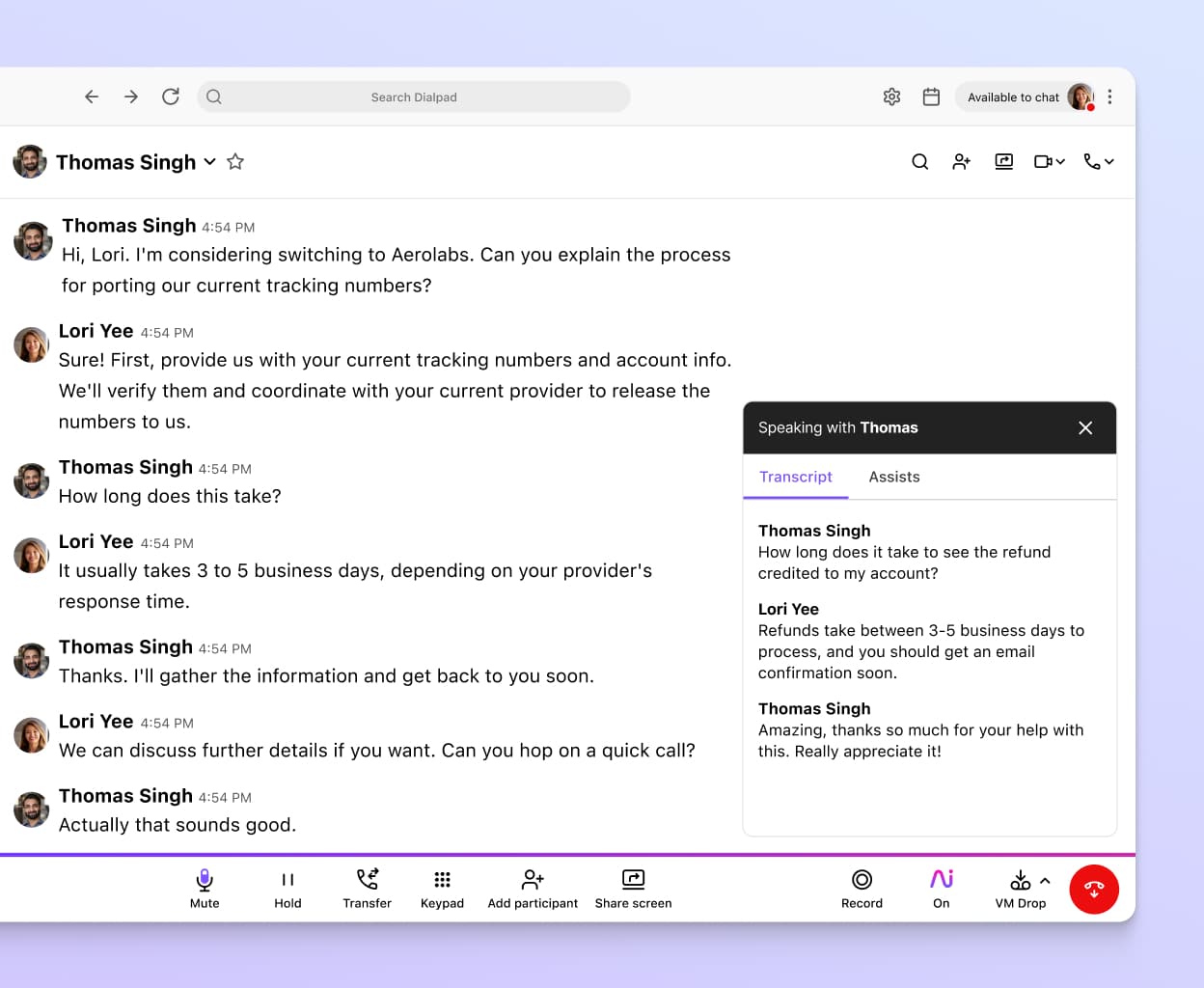
Automated meeting summaries
Dialpad Ai also sends your call's attendees a convenient recap email after the meeting is over, with the searchable voice-to-text transcript, call centre transcripts, action terms, and recording, all compiled into an easily-digestible overview. Someone missed the meeting? No problem, just send them the recap.

Plays nice with any device
Because Dialpad's transcription feature is built right into its unified communications platform (which works across Android, iPhone, PC, Macs, Apple, Microsoft, you name it), you and your teammates can use it on different desktop and mobile devices. You can even make phone calls and have video meetings on your Chrome browser, no downloads needed.
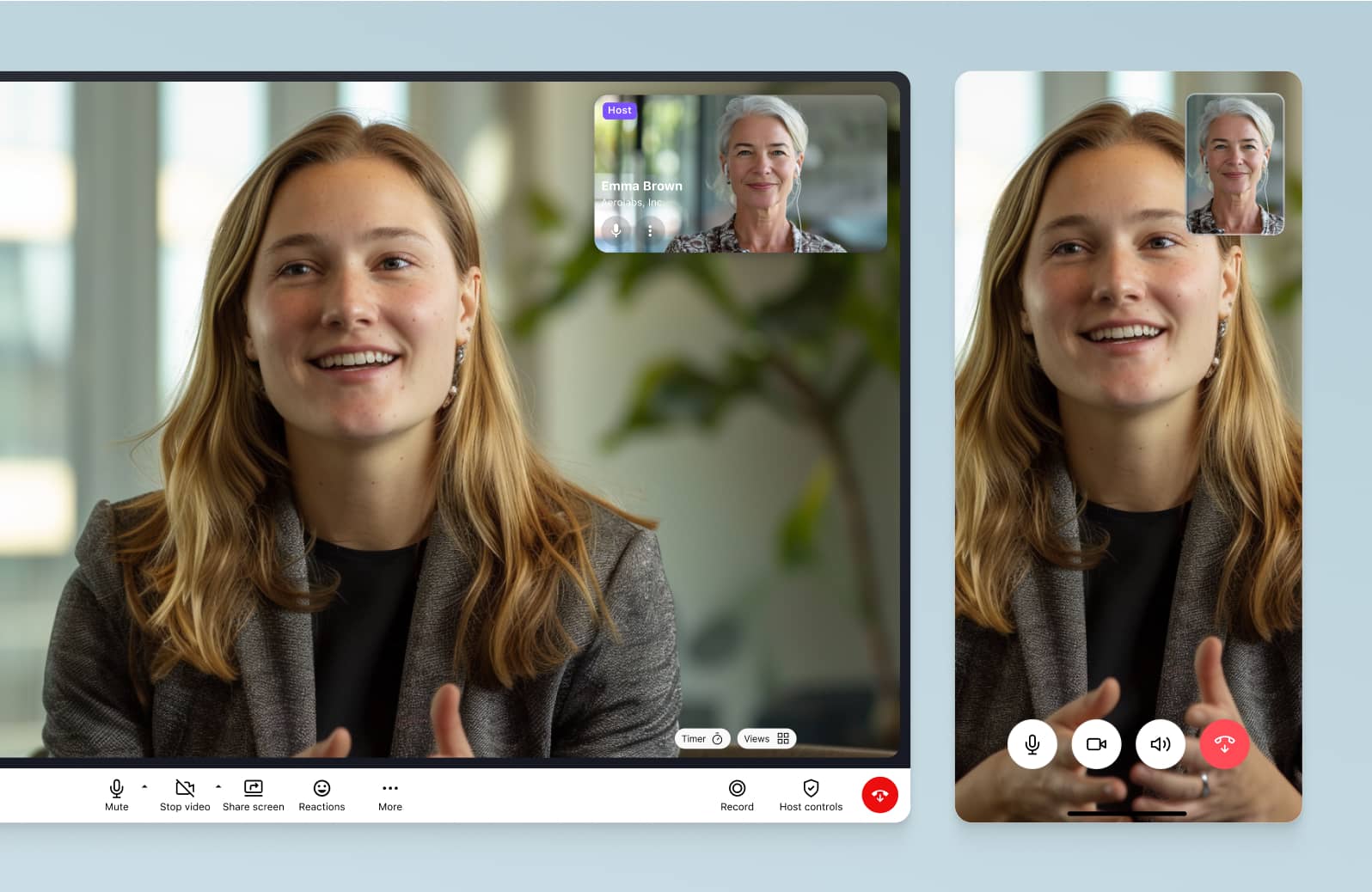
Real-time agent assists
Not only does Dialpad Ai transcribe calls, it can also help your staff live as they're on calls. Whether you want to show your sales reps how to handle objections or help your customer support agents tackle tricky questions from customers, RTA (Real-time Assist) cards can help! Managers can create RTA cards with tailored notes about specific topics—and set them to trigger automatically on agents' screens when those topics come up on calls in real time. It's like automated coaching, at scale.

Live sentiment analysis
Save those difficult calls from ending in disaster. Dialpad Ai does live sentiment analysis, which lets supervisors monitor all the active calls going on and quickly see which ones are going south. And because it also transcribes calls in real-time, they'd be able to open up the transcript to get more context before deciding whether to jump in and help the agent—without having to message the agent on the side and distracting them from their conversation!

Voicemail transcription
Too busy to listen to all of your voicemails? Dialpad’s visual voicemail feature transcribes all of your voicemails too—just in case you're in back-to-backs all day and don't have time to listen to them one by one.
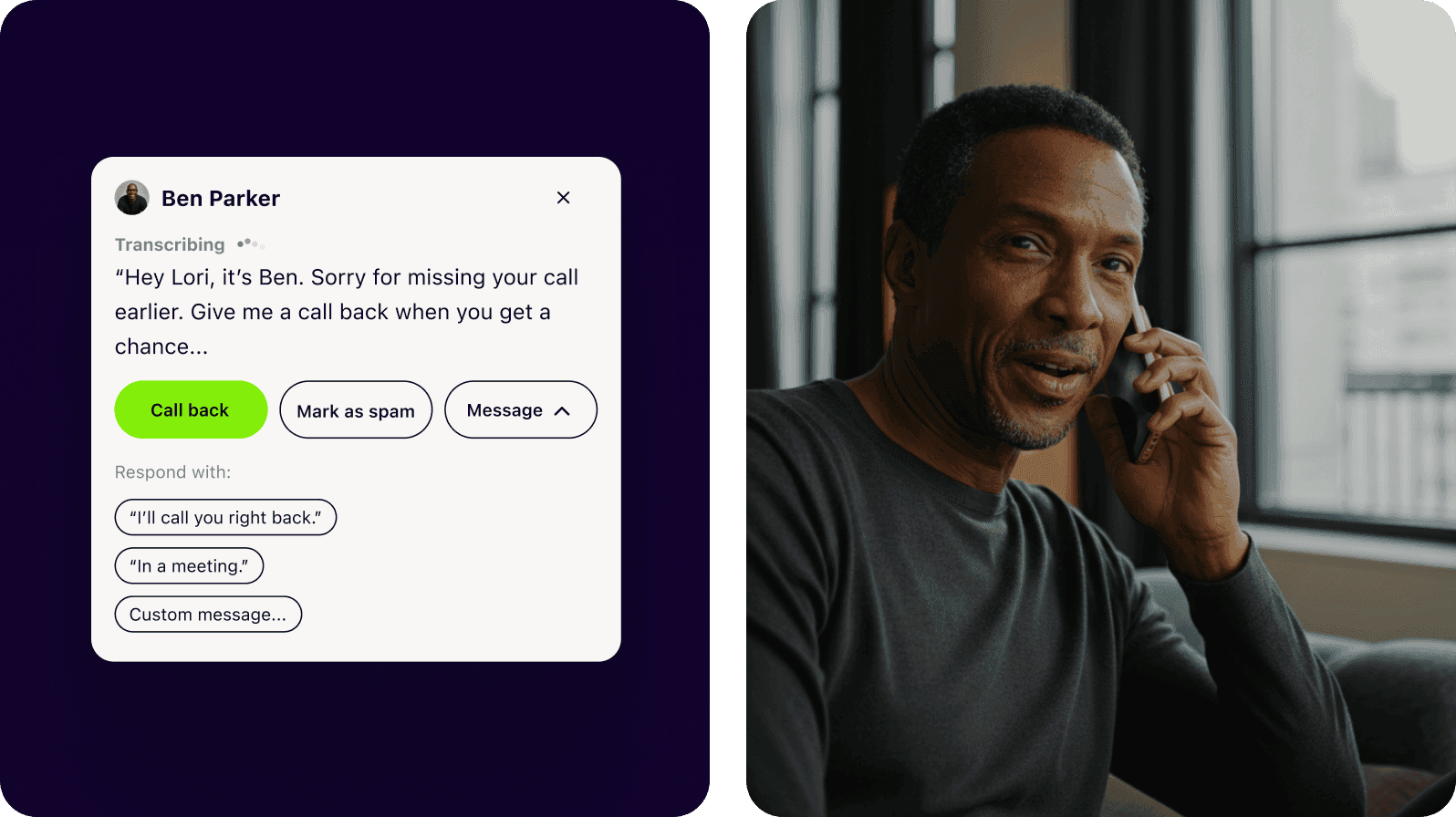
We love the transcription service with Dialpad. We transcribe calls, find opportunities for improvement, and have been effectively doubling the demos-to-calls ratio with better analytics and more sophisticated analytics.
Scott Hansen
Founder and CEO of LeadSigma
Who says you have to pay for a separate voice transcription tool?
Dialpad's unified communications platform comes with an accurate, real-time transcription feature built right in. Book a demo to see how it can work for your business or take a self-guided interactive tour of the app on your own first!
What else do you get with Dialpad?
Truly unified communications
Along with speech-to-text transcription, Dialpad also lets you make phone calls, have video meetings, send instant messages + SMS/MMS texts, and more—all from your favourite desktop or mobile device. There's even a fully integrated contact centre platform, which we built ourselves. That means you get everything with one login, one account, and one cohesive user interface.
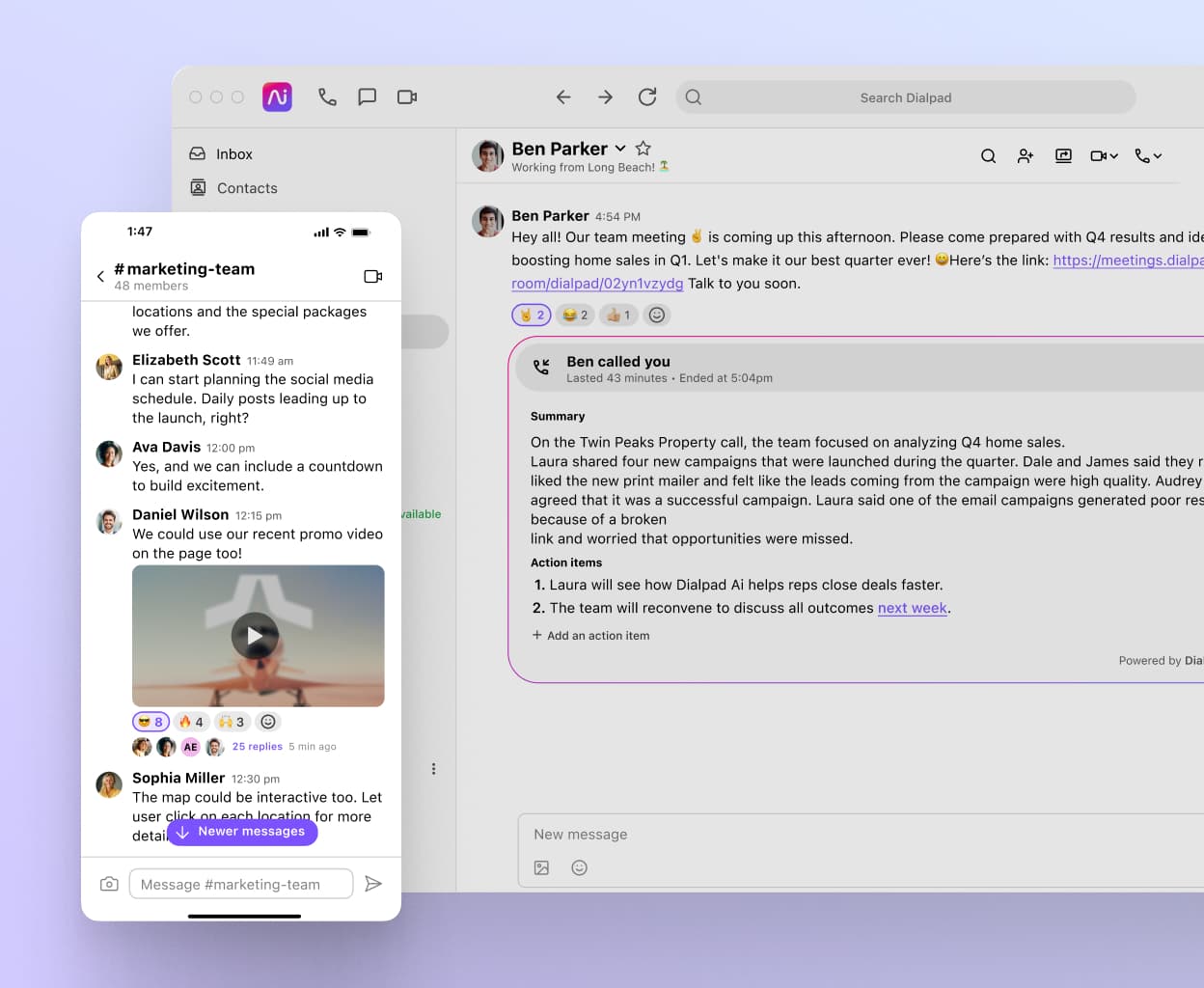
Audio recordings included
Another unique thing about Dialpad? You get video and audio recordings too, and you can turn recording on and off manually in a call—or automate it, if you like.

Coaching playlists
Create a "playlist" of the greatest hits (or worst hits) to show your team what good calls and bad calls sound like. With Dialpad, you can pull your audio recordings into different playlists (like "conflict resolution" or "how to talk about Feature X" and share them with agents or reps so they can learn on their own time.
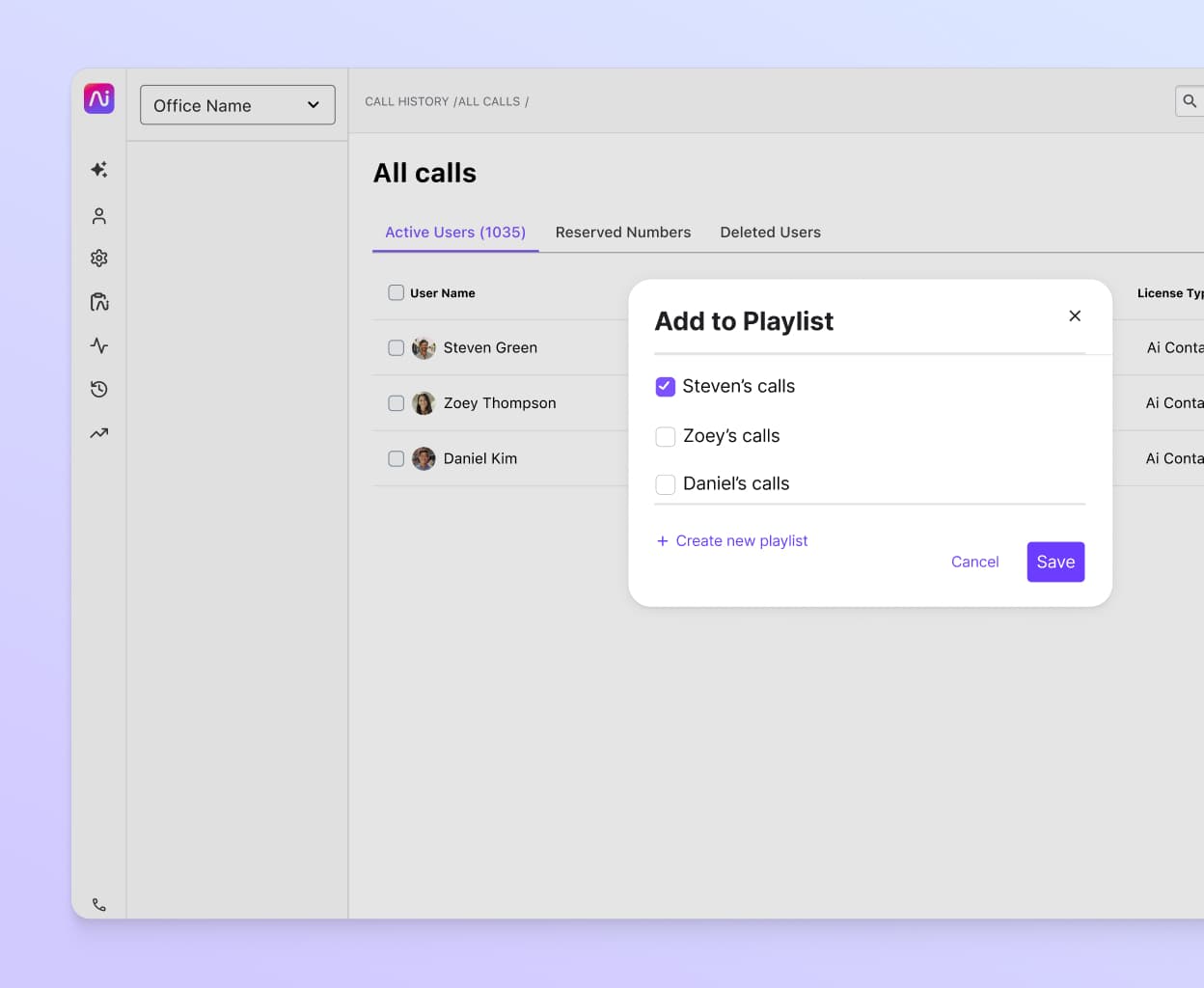
The real-time transcription has been really handy, and the post-call summaries give us something concrete to review every month. We can see what people have been asking about, which lets us be better equipped to answer those questions and get ahead of the pack.
Deirdre Roraduri
Membership Service & Events Specialist, Western Australian Cricket Association
Why invest in an AI transcription service?
It makes your video meetings and calls more accessible
Audio transcription services can give your employees and teammates who are hard of hearing have reliable access to real-time information, which empowers them to participate in conference meetings and business calls with fewer restrictions.
Dialpad’s meeting transcription software is built with natural language processing and machine learning algorithms to ensure accurate voice transcription, and you can also add company-specific lingo and terms to your dictionary so it can pick up on them as it's transcribing!
And with the post-call summary automation, everyone gets the call notes and summaries delivered straight to their inbox right after the meeting. This means that even if you do miss bits of a real-time conversation, or work in a different time zone and couldn't make the call, you can still access the same key information as everybody else.
It makes contact centre teams (especially supervisors) more efficient
Regardless of whether you're a startup with a small customer support team or a global business operating an enterprise-grade contact or call centre, it’s not always practical for supervisors to personally sit in on each and every call.Along with real-time voice transcription, having a live sentiment analysis feature empowers your supervisors to keep an eye on multiple agents' calls more easily.With Dialpad, of course, they can even open up the full call transcript, which gets updated live, to get more context on the situation before they jump in.
👉 Fun fact:
Dialpad's machine learning and algorithms can even pick out filler words like "um," “you know,” and “right” (trust us, you say them more than you think!), and detect if you're speaking too quickly. And yes, of course, it'll pop up a note to let agents know so they can recalibrate!
It helps you train new hires more quickly (and automates a lot of it for you too)
Recordings and voice transcriptions can play a vital role in call quality auditing, compliance, and training processes. Not only do they help you assess the quality of your calls on a regular basis, they also give you concrete data and information to show your employees what good and bad calls sound like. But they're still often underused!So, use all the valuable data you already have. Take your call transcriptions and drill into them for insights that can improve your training and development for new agents and even new hires in other departments. (Oh, and don’t forget to notify your customers that you’re using a voice recorder for training and compliance purposes.)
With Dialpad's built-in call transcription, you can get more out of your meetings
We're all having meetings, every day. How can we make them more productive and useful—even for folks who can't join because they're in a different time zone or need to focus on heads-down work?
With Dialpad, you get a fully integrated, built-in transcription feature that's already analyzed four billion minutes of voice calls and ranks above Google Voice in both dictation and keyword accuracy.
And thanks to machine learning, the more you use Dialpad Ai, the more accurately it can transcribe! If you're looking for call transcription software, don't pay for a bunch of disparate tools. Get everything in one package with Dialpad.
See how Dialpad's voice transcription works!
Book a personal walkthrough with our team or take a self-guided interactive tour of the app on your own first!
